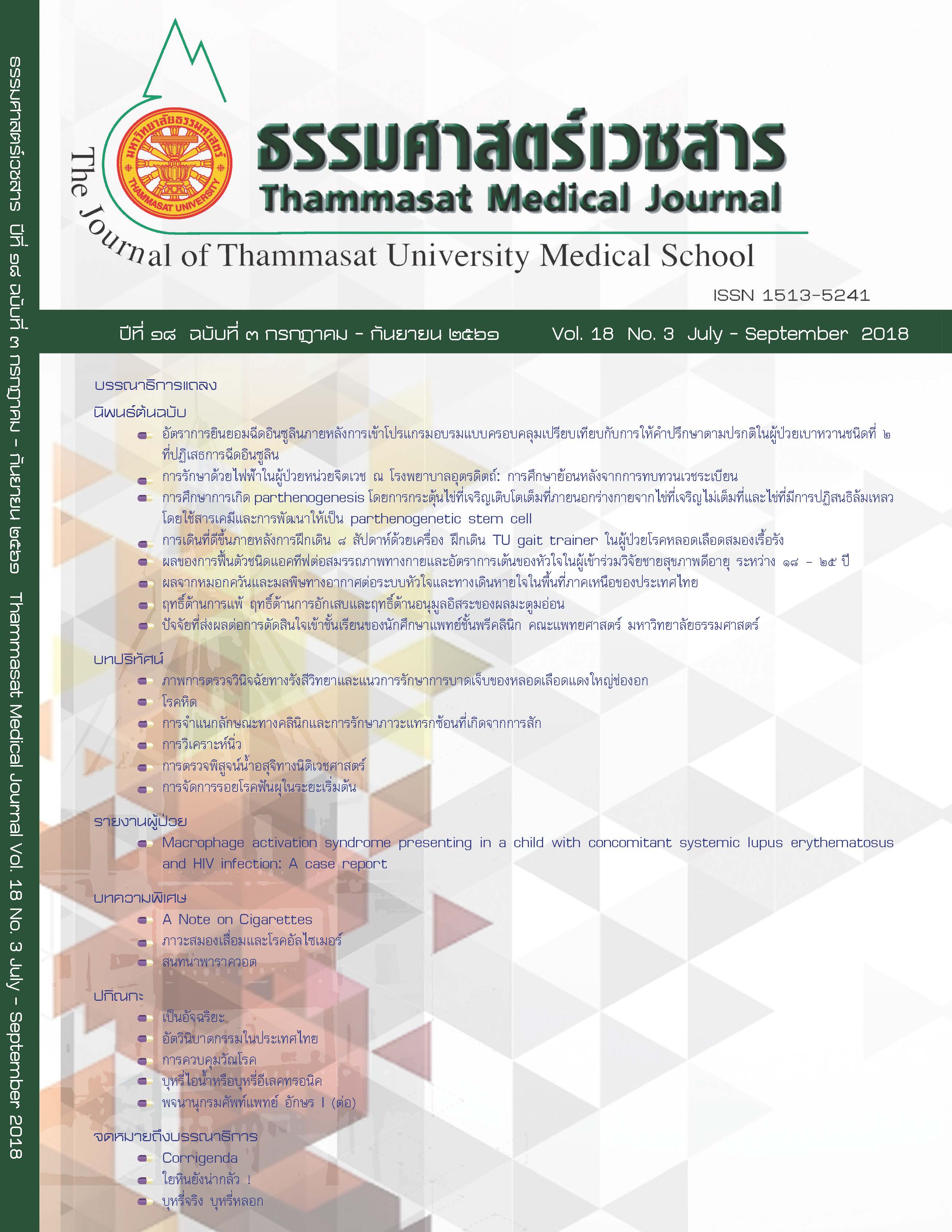Stone analysis
Keywords:
urolithiasis, stone analysis, Dual-energy computed tomographyAbstract
Urinary calculi are usually recurrent for approximately 50% within 5 years due to various risk factors. Precise diagnosis with stone analysis is conducted to realize components and types of stone so as to prevent stone recurrence effectively. A number of stone analysis methods that are currently accepted are such as chemical analysis, thermogravimetry, optic polarizing microscopy, scanning electron microscopy, infrared spectroscopy and X-ray diffraction which have different advantages and drawbacks. One of the most popular methods in term of precision being employed to analyze almost all kinds of stone with uncomplicated procedures and reasonable price is infrared spectroscopy especially in Fourier transform infrared spectroscopy (FT-IR) type. In addition, there is new method of radiology with Dual-energy computed tomography which can identify types of stone before surgery. This evolution can support diagnosis of stone disease in order to determine guideline of prevention and management patients in a proper way.



